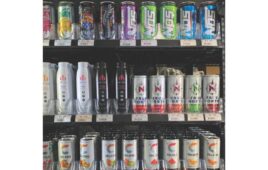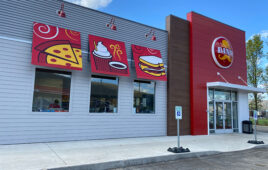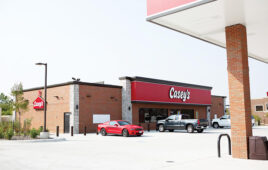Theft in c-stores might be considered a three-pronged issue because there are three main groups that are often responsible: vendors, customers and employees.
By Jim Callahan, Contributing Editor
There are important topics in convenience retail.
Good customer service is an important one. So is implementing effective back-office systems that can help with accounting. Inventory management systems that assist in optimizing inventory should be part of every c-store conversation.
Then, there’s theft prevention. Preventing theft is as important today as it has ever been.
THREE-PRONG APPROACH
Theft in c-stores might be considered a three-pronged issue because there are three main groups that are usually responsible: vendors, customers and employees. Of course, developing prevention programs that incorporate best practices for each respective group can go a long way in decreasing shrinkage and discouraging future theft incidents. Looking closer at these key groups can reveal some behaviors that retailers should look for.
• Vendors. Unscrupulous vendors often steal when they have the opportunity. Like some employees, these individuals take advantage of your trust. As retailers, we allow those opportunities primarily when we don’t do a thorough job of checking in deliveries. You can’t check a vendor in while standing behind the counter. Touch and count every item and remind store managers of the critical byproduct of this responsibility: job security.
Despite your regular store duties, you absolutely have to look up from whatever you’re doing and scan the store to see what your vendors—and customers—are doing. Here’s a case in point: Standing behind tinted glass, I once observed a beer driver bringing in 80 cases of product, part of a 100-case order, then take 20 cases of beer off a pre-existing display so the person checking the order in counted and approved the 100-case invoice. I took photos of the driver red-handed.
Ultimately, we were reimbursed and the driver subsequently was fired. After that, store employees reviewed procedures regarding when drivers failed to drop a delivery at a designated spot.
Shifting from vendors to employees, the need to be vigilant and mindful that there are even more opportunities for worker theft is even more pressing. Here a few things to consider:
• Employees. There are so many ways to steal from an employer. However, most experienced retailers have seen all the tricks to include ‘playing in the cash register’ such as manipulating “no sale” rings.
Daily worksheet processes, camera systems and detection techniques for measuring sales, average sale per customer (ASPC) methods have improved dramatically. For example, at a store I once observed on video a cashier taking $40 out of the register for no good reason.
The cashier, however, overheard the manager informing the assistant manager about it and secretly removed the video recording to hide evidence.
The worker was fired and arrested before we learned about the stolen video and she actually invited friends to her police hearing before her case was heard—confident that she had outsmarted her employer.
She was partially right, but when the store’s manager brought separate electronic equipment into the court, the manager was able to show the judge a separate video, clearly showing the cashier stealing the first video off the manager’s desk, you could have heard a pin drop before the judge sentenced the worker to jail time.
• Customers. Again, the same vigilance and modern technology that can help a c-store owner and operator track the activities of employees can help monitor the activities of your customers. Not only can surveillance equipment detect illegal activity, it can also show incorrect transactions, if a customer received bad service, etc.
Lastly, you can be doubly sure that the integrity of a store’s operation is being maintained by doing the following:
• Always have someone else ring up your purchases.
• If you work alone, hold the entire transaction up to the closest camera, receipt taped to the item which provides proof and another layer of accountability.
• Make timely cash drops. Having too much money in cash registers is an invitation to robbery and disaster. Of course, a thief would prefer a $1,000 score over just getting away with $200. Remember the more money available to tempt a criminal, the bigger the invitation is for the same individual to try that same location again.
Theft is a serious topic. Devising means to deter theft should be a serious matter.
Jim Callahan has more than 40 years of experience as a convenience store and petroleum marketer. His Convenience Store Solutions blog appears regularly on CStoreDecisions.com. He can be reached at (678)485-4773 or via e-mail at [email protected].




